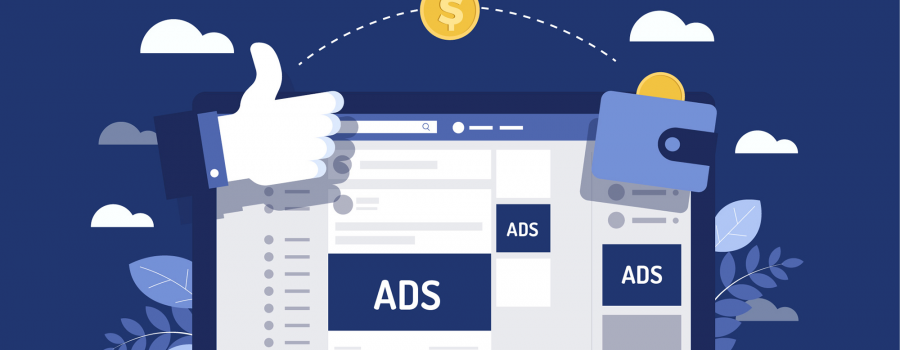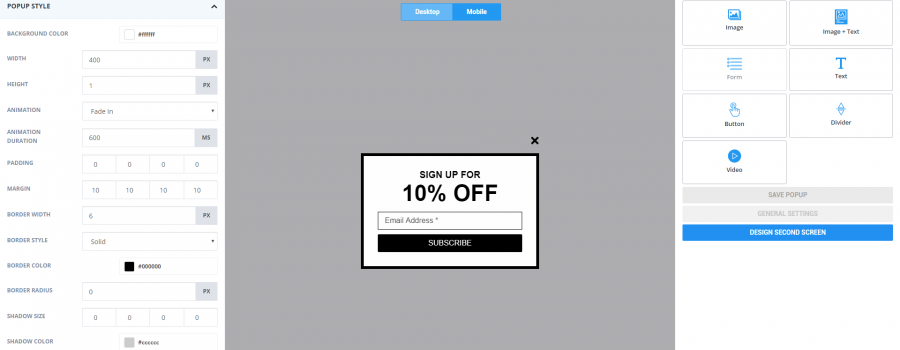How to Generate E-commerce Sales Using Facebook Advertising

Before, all you needed to grow a social media following was some creativity. Today, you also need to add some money to your social media marketing strategy. Facebook boasts the largest user base with over 2.38 billion active users each month.
This user base is attractive for ecommerce marketers and business owners. However, Facebook intentionally restricts the number of people you can reach organically with your posts. This is why you should consider using Facebook ads for e-commerce to increase your chances of converting that target audience into buying customers.
Many e-commerce business owners are hesitant about Facebook ads. This is primarily because 62% of marketers complain that Facebook ads didn’t hit their marks.
You don’t have to become a part of that percentage. What you need to do is to understand how to effectively leverage Facebook ads for e-commerce to get your posts seen by the right audience at the right time. And the best part is, we’ve got you covered.
Why You Should Consider Facebook Ads for E-Commerce
Besides having an appealing user base, Facebook ads for e-commerce shouldn’t be overlooked for the following reasons:
Native advertising
Have you ever noticed how YouTube ads force you to wait for an unwanted 30-second ad to end before you click on the skip ad button? This interruption makes your brand come off as annoying and you risk getting dismissed by potential customers.
On the other hand, Facebook strives to integrate its ads into a user’s natural flow.
The ads blend in the newsfeed of a specific target audience for your business. Users can then opt to keep scrolling or check out your ad making them feel more in control of what they want to read. This way, you get their undivided attention by granting users this freedom.
Best alternative to Google Ads
Google ads may be one of the most effective ways to advertise your online business. The only caveat is that they are quite expensive. The reason for this is because high target keywords have a high search volume, so you will pay higher for clicks.
Furthermore, the average cost per click for in Google ads is $2.69 but it varies by industry. You can expect to pay $1.16 as an e-commerce business. The average cost of Facebook ads across industries is $1.72. The cheapest clicks are for the apparel industry costing $0.45 per click.
The visual ads convert better and Facebook ads offer this advantage. It’s easier to deliver your message using an image or video compared to text ads. That’s another reason Facebook ads win over Google Ads.
Wide targeting options
Facebook ads for e-commerce helps you become more precise when reaching the right audience. The more you know about your target audience, the easier it gets to connect and convince them to make a purchase.
You have the option of targeting people beyond demographic data such as age and location. You can personalize your Facebook ads based on user behavior, interests, and their connections.
Extensive customization
Facebook ads also offer users the option of creating a unique landing page, turning leads into email subscribers as well as making it easy for prospects to contact you.
In addition, you can send those who click to view your ads to your Facebook fan page to get their contact information.
How to Set Up a Facebook Ads
You’ll have to set up Facebook ads in the Ads Manager located in your Business Manager Account. It also provides the option of sharing your account with marketing agencies if you need help managing your campaigns.
The Ads Manager helps you to perform the following tasks:
- Set up campaigns
- Create new ads for each campaign
- Manage your bids
- Create which audience to target
- Track Facebook campaigns
Creating Facebook ad campaigns
Facebook ads follow an organized campaign structure that includes:
- Campaigns
- Ad set
- Ad
In the campaign section, you’ll find your ad sets and ads. You will have to start by choosing your advertising objective at this point.
In the ad set, you’ll select the type of ads that best suit your e-commerce objectives and target audience.
Finally, the ads section is where you decide on the elements to include in your Facebook ads for e-commerce. They include, images, copy as well as the call to action.
One campaign can have several ad sets to allow you to try out different target audiences. This also helps you to pit several ads against one another to determine your best option.
Choosing an objective for your Facebook Campaign
Choosing an objective is the most vital step when it comes to using Facebook ads for e-commerce. Marketers who get it all wrong here end up complaining that Facebook ads don’t work for businesses.
The first thing you need to realize about Facebook is that people look for products and services differently. In Google Ads, people search for a keyword of what they need. The Facebook audience uses the platform mainly to connect with friends. That means that your marketing approach should be different.
To help you align your ads to your marketing goals, Facebook ads provides three categories of objectives to choose from. It looks a lot like the marketing sales funnel so that your ads will help you to capture attention, nurture leads, and convert potential customers. Under every category, there are even more options.
Impressive, isn’t it? Let’s dive into the details of each objective.
Awareness
Awareness objectives involve the top-of-the-funnel ads that help you generate interest in your products and services.
Facebook ad objectives that fall under the awareness category include:
- Brand awareness
- Local awareness
- Reach
The Brand Awareness objective is ideal when you want to reach people but you don’t expect users to take a specific action. This objective works better for large businesses interested in larger branding campaigns.
The Local Awareness objective helps you target people near your business location. You can run ads linking to your site or showcase your page using an ad. It’s worth noting that the local awareness objective has reduced targeting options.
The Reach objective comes in handy when you want to drive your awareness efforts to a smaller audience. This objective also allows you to control how regularly your target audience views your ads though frequency capping.
Consideration
Once you get people interested in what you have to offer, the next step is to try to transform your Facebook traffic into leads. Consideration objectives helps people at the middle-of-the-funnel stage get more information about your brand.
Under this category, you could try out any of these five options.
- Traffic
- Engagement
- Video views
- Lead generation
- App installs
The Traffic objective is great when your goal is to drive that traffic outside of Facebook. You could include a link where users can read a blog post, listen to your podcast, find your app or go to your landing page.
On the other hand, the Engagement objective helps you urge users to connect. They include likes, comments, reactions or shares. They also work best when you want to generate event responses and offer claims.
The Video Views objective is perfect when you’re promoting a video. Your primary goal here is to get views more than a click to a link or conversions. Once you get the needed video engagement, you can then send retargeting campaigns to the same audience.
You should use the Lead Generation objective when you want to get your leads within the ad instead of driving that Facebook traffic to your site. When using lead ads, utilize a third party tool that will capture the email information and export them into an email marketing software. This optimizes user experiences because potential customers expect to receive your products or services once they opt in.
The App Installs objective comes in handy when you want to kick-start your downloads. Those first 72 hours are vital for improving your app store ranking.
Conversion
Conversion objectives helps you give Facebook users that extra nudge to get them to register, download, opt-in or make a purchase. It marks the bottom-of-the funnel marketing stage using Facebook ads for e-commerce.
The three objectives you’ll find here include:
- Conversions
- Product catalog sales
- Store visits
Conversion ads aim to increase sales, sign-ups, purchases or any other specific action on your site. To optimize for the Conversions objective, you are required to have a minimum of 15-25 conversions each week. This way, Facebook will get sufficient data to understand your target audience and those who are likely to convert.
The Product Catalog Sales objective is designed for e-commerce businesses that sell a wide variety of products and frequently update their product catalogs. This is because you’ll be able to integrate your product catalog with Facebook and generate product feeds when creating your ad campaigns. You could also use it when creating remarketing campaigns.
Lastly, the Store Visits objective is great when you have multiple business locations. It helps you to build your Facebook ads that are locally relevant to the location of each store.
Best Facebook Ads for E-commerce Sites
Now you know how to set up Facebook ads and choose the right Facebook objective for your marketing goals. Let’s look at some of the most effective types of Facebook ads for e-commerce campaigns.
Dynamic product ads
Dynamic ads target potential customers by displaying tailored ads that are based on their activity history on your website.
When you’re using the dynamic product ads, you don’t have to design an ad template for each product in your catalog. Templates will simply pull the product photos, names, and pricing based on the uploaded product details.
You also have the option of displaying single or multi product ads to your customers based on the products they viewed or added to their carts.
Carousel ads
Carousel ads are the most versatile Facebook ads for e-commerce. According to Kinetic Social, they drive 10 times more traffic to websites than static Facebook sponsored posts.
What makes carousel ads fun and engaging is you can display three to five images, links, and calls to action as a single ad. Some of the ways you can leverage carousel ads include:
- Summarize product features
- Illustrate how to use it
- Tell a story to drive engagement
- Share an article
- Take users through product tour
Instant experience ads
Instant experience ads are the improved version of the Canvas ads. They are optimized for mobile users and loads faster than web pages.
In addition, they allow you to include product carousels, tagged products as well as form fill outs. Instant experience ads are compatible with Facebook’s tracking Pixel that helps you re-engage visitors.
Video ads
Video ads continue to be vital for boosting engagement and conversions to a wider audience. Strive to keep your videos short and informative because it takes only 1.7 seconds to grab the user's attention. Remember to use captions to make your videos accessible. Also, follow Facebook video specs to keep up with the best practices.
Collection ads
Collection ads are a must-have in your Facebook ads for e-commerce arsenal. They are more of a hybrid of the Carousel and Instant Experience ads.
Collection ads allow you to build your brand by making use of both video and images to display multiple products. All this is done in a way that’s interactive to draw your potential customers in.
Users will have the option of clicking through product pages and view full screen images or videos of what captures their interest. This turns the Facebook ad viewing into an experience that makes them feel like they’ve just taken a stroll into your store.
Unlike the other Facebook ads that focus on content promotion and brand awareness, Collection ads are product-focused. They’re visually compelling and mobile-friendly. This is why they’d work best if you’re looking for a creative way to give an extra push for your products online.
Essential Tips to Get More Bang for Your Buck
Below are some tips to ensure that you make the most of your Facebook ads for e-commerce.
Install Facebook Pixel
The Facebook Pixel is a tracking code that’s used to monitor the behaviour of your site visitors. When Facebook users click on your ad, the pixel code is placed on their device. You’ll be able to create a custom audience and also send follow-up messages to potential customers.
Similarly, you can use the targeting data you get from the pixel to create lookalike audiences of people with similar demographics. This helps you to expand your customer base.
Run Facebook remarketing campaigns
The truth is- it takes a while to connect with the audience on Facebook. That’s why you have to run remarketing campaigns consistently. These retargeting campaigns will yield a higher ad engagement and their cost per clicks are cheaper.
To run Facebook remarketing campaigns, install the Facebook Pixel in your custom audiences in order to remarket to different segments. Remember, one follow-up ad won’t cut it! Utilize sequencing ads because they allow you to set specific time windows on each ad. This way, you’ll be able to stay on top of your potential customer’s minds and help them convert eventually.
Leverage Facebook audiences
To ensure that your Facebook ads for e-commerce always get to the right target audience, you have to understand the three main categories of Facebook audiences. They include:
- Saved audiences
- Custom audiences
- Lookalike audiences
SAVED AUDIENCES
To create this type of Facebook audience, you can use numerous targeting options such a demographics, behavior, interests,and location.
CUSTOM AUDIENCES
The Facebook custom audience is the most valuable audience because they are considered warm leads. Your main goal is to nurture your relationship with them.
Assess their level of engagement and determine the type of content they respond to best. This will ensure you create effective calls to action to get them to contact you. In addition, you can leverage pixel data to remarket past visitors using this audience.
LOOKALIKE AUDIENCES
This type of audience resembles your current web visitors or clients. They may have the same hobbies and interests as your existing customer base. You can think of the lookalike audience as a cold lead you can easily turn warm. You can also utilize Facebook Pixel to find people with the same attributes.
Final Word
Facebook ads for e-commerce don’t have to be hard. You just have to understand your objective for each ad and the process it takes to reach your target audience.
Focus on using the awareness, consideration, and conversion objectives to your advantage. Don’t forget to install the Facebook Pixel to build your ideal audience and send remarketing messages.
Increase Sales Today
No Credit Card Required. Pre-built Strategy.




